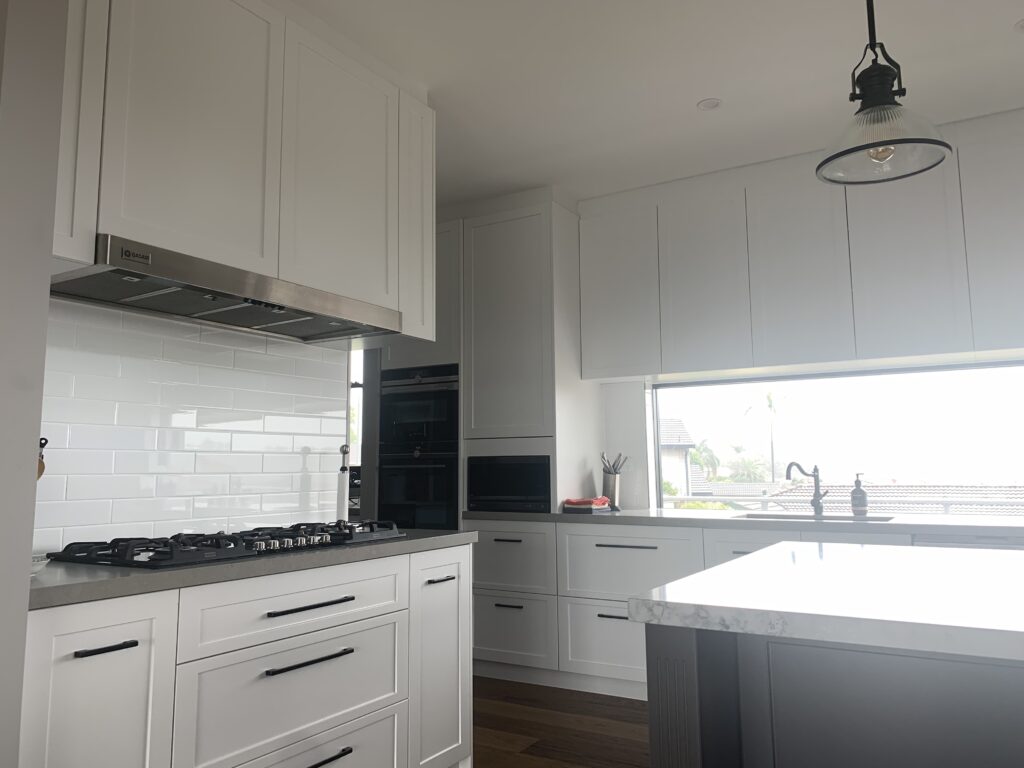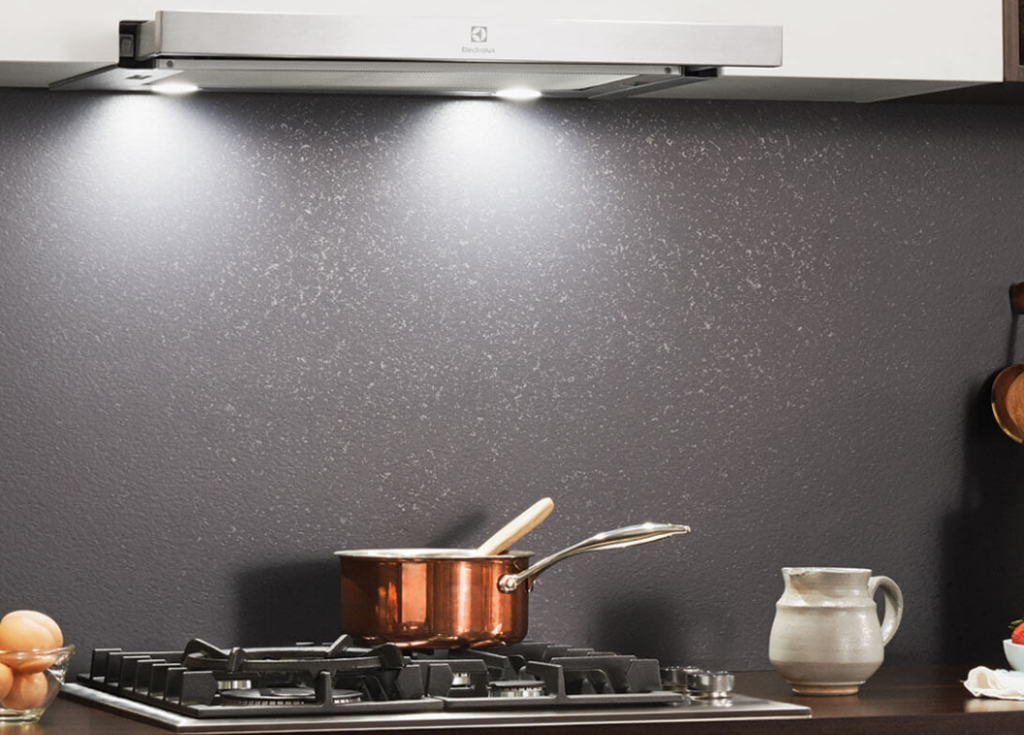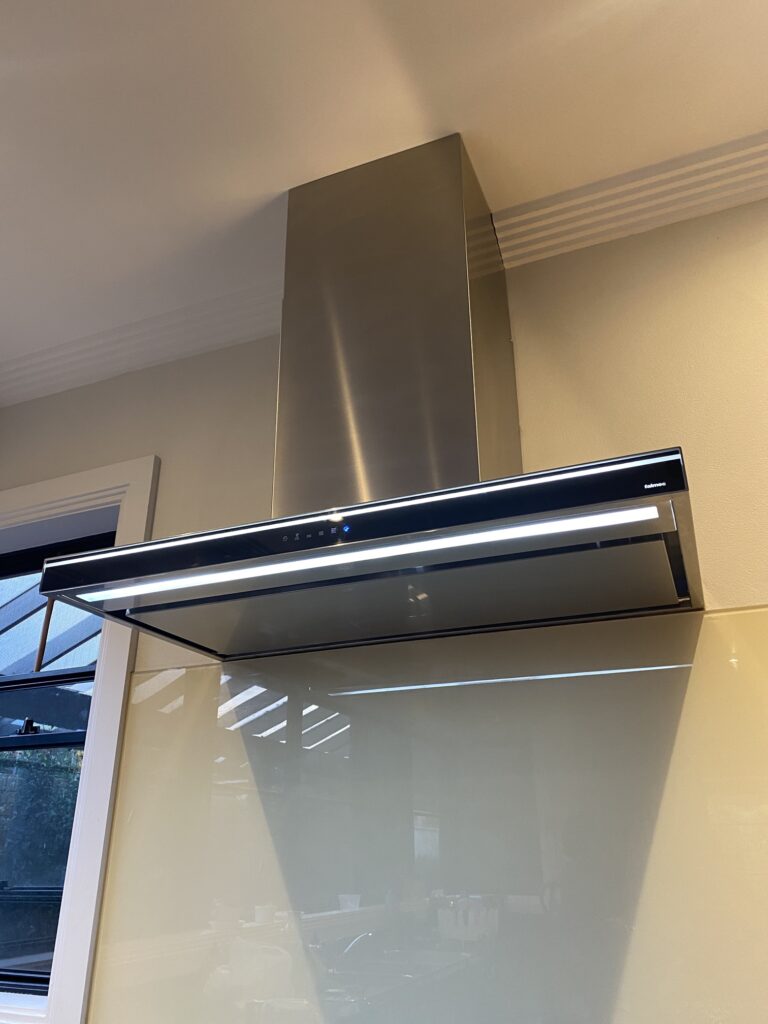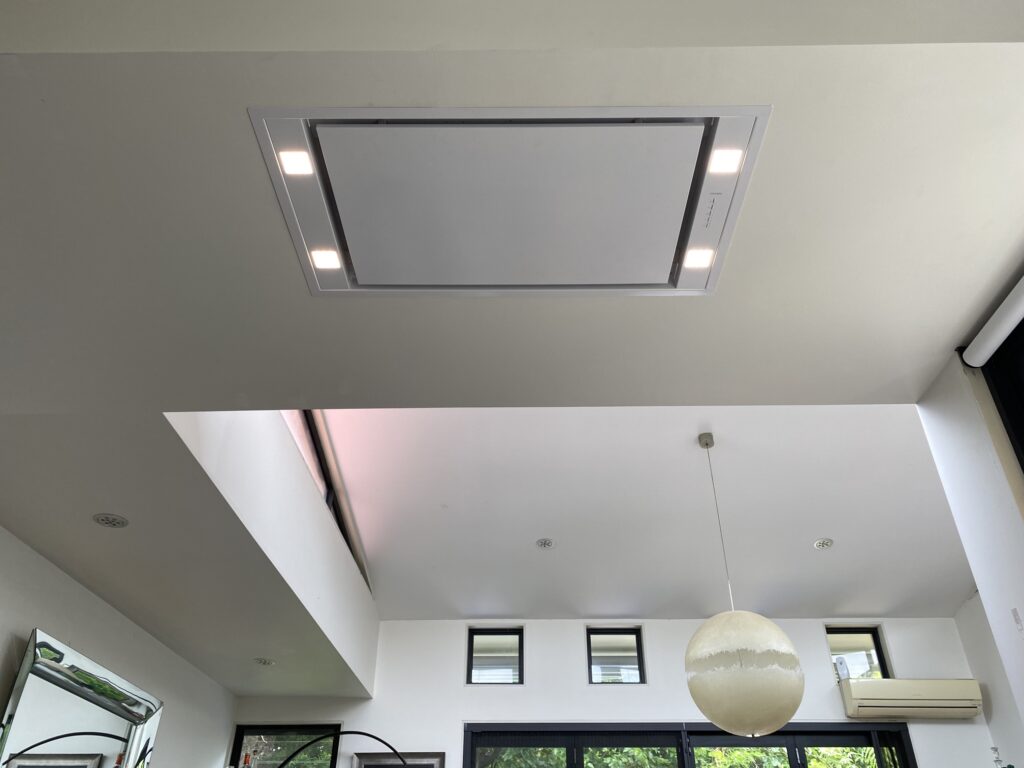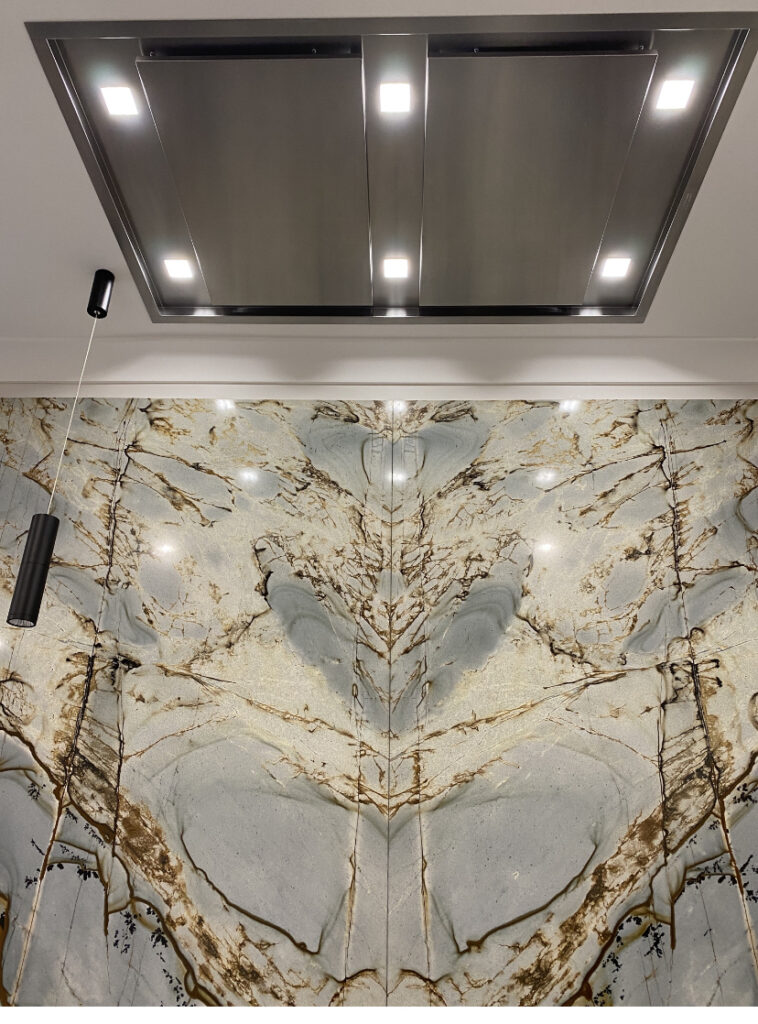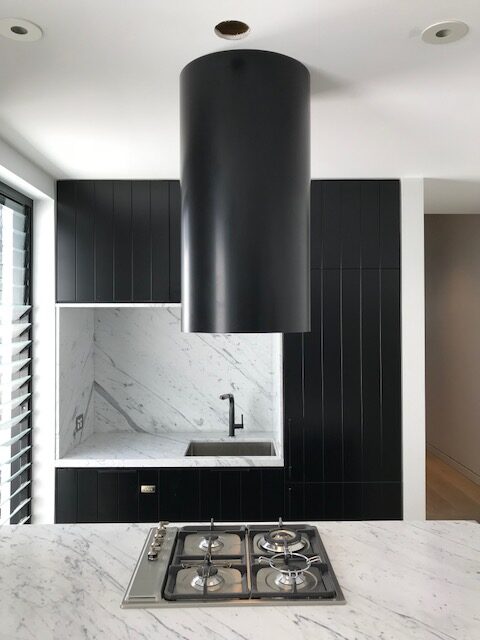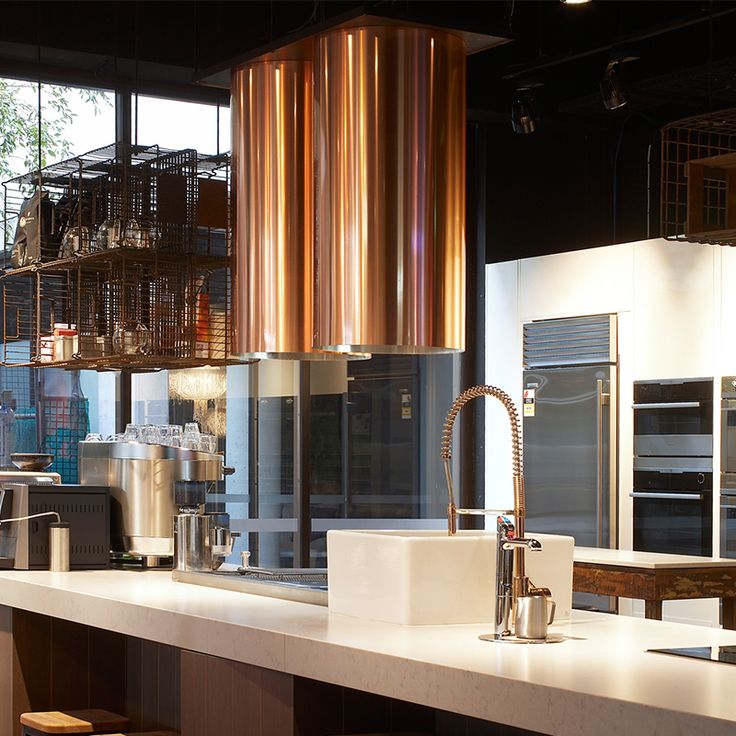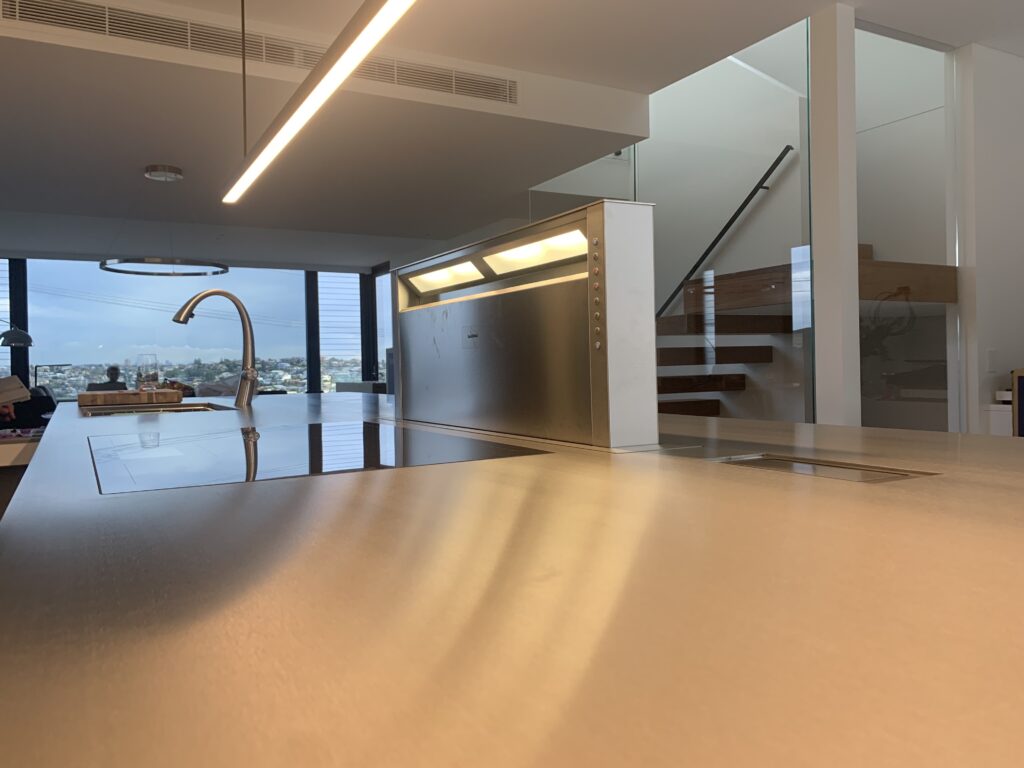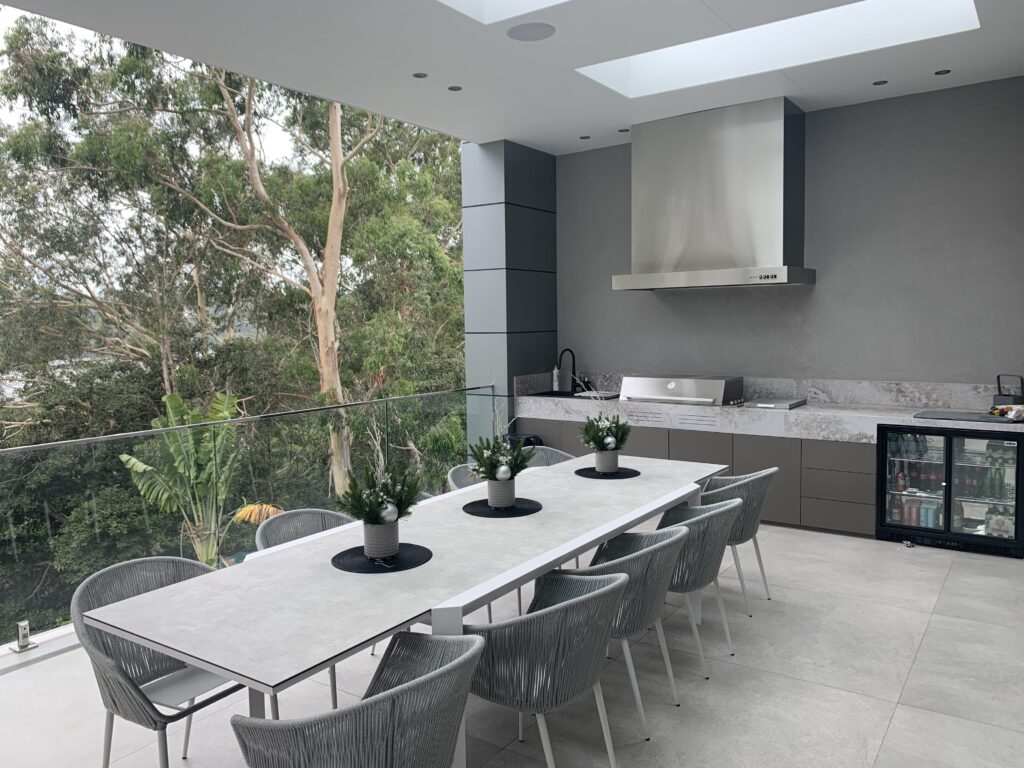Do you have a kitchen? Do you cook in your home? If so, ventilation is an important consideration for the health of you and your family. Rangehoods keep the nasty stuff out of your home while preventing fire hazards that may arise when cooking!
There are many types of range hoods available on the market today; you will need to know how they work before making a decision on what to purchase for your next kitchen or build. If you do not select the right rangehood system for your kitchen, you could find yourself running into the following issues:
- Rangehood becomes blocked with grease, causing a fire hazard.
- Gas and Exhaust fumes backing up to other parts of your home due to rangehoods that are too small for the kitchen.
- Poor Ventilation and Lack of Air Flow due to improper ducting planning and installation.
In this blog post, we’ll discuss the types of rangehoods and ducting available, what is best for your needs and what to consider when planning your next kitchen.
Types of Rangehoods & Exhaust Systems:
As far as ventilation goes, there are several different rangehood systems that all dispose of the smoke from your cooking differently. Depending on the area that you are installing a rangehood as well as the number of other factors will determine what rangehood systems are suited for your fit-out.
The most common types of rangehoods include wall-mounted, ceiling-mounted, which you will see in most homes in Australia. Some other less common exhaust range hoods include downdraft, and ductless range hoods, or recirculating rangehood.
Wall Mounted Range Hood
Wall mounted rangehoods are the most common type of exhaust range hood for a home kitchen because they are generally the most affordable and can be conveniently placed in most kitchens.
A wall-mounted rangehood works by taking the fumes from the cooking area and moving them to a vent that is typically positioned on top of the range hood or within the wall it is mounted to. These types of Rangehoods are most commonly installed into the cabinets above your cooktop however other types of wall-mounted range hoods are becoming more popular in modern kitchens.
The ducting for a wall-mounted range hood is typically placed in a vicinity of the range hood that is easily accessible and out of the way from cooking. This is commonly within the above cabinetry or within the adjacent wall. Traditionally the ducting will deposit smoke from an exit on the side of the house, on the roof, or both.
The range hood can be mounted on an interior or exterior wall, depending on factors such as the desired location for ventilation, ease of installation with regards to available power sources, whether there are any windows nearby that could cause interference and many other considerations.
Most common wall-mounted Rangehoods
Undermount Rangehood
Slideout Rangehood
Canopy Rangehood
Fixed Rangehood

The benefits of a wall-mounted range hood include:
- Rangehoods that are mounted on the wall and in most kitchen designs this is the most practical place to install them.
- Larger Catchment Area compared to fixed undermount (Filter Size).
- There is a high range of different types and sizes to fit everyone’s budget. Wall-mounted systems are traditionally the most affordable and cheaper than most roof-mounted or downdraft systems.
- Majority have a depth of 500ml meaining a majority of the smoke is caught.
- Rangehoods can be installed in two ways: either by mounting them to your kitchen ceiling or installing them flush against the wall and/or cabinets.
Situations when your kitchen would not be suited to a wall-mounted range hood include:
- If there are no cupboards above the cooker.
- If the system cannot be mounted flush against cabinets due to plumbing or wiring obstructions.
- The rangehood is not a permanent fixture, and you plan to move in the near future.
- Sufficient Venting and Ductwork are not able to be installed on top of the range hood unless a recirculating system.
- If your kitchen does not have an existing vent system installed for wall mount rangehoods then it will need one retrofit before installation can take place.
Ceiling Mounted Range Hood
Ceiling mount range hoods are another type of rangehood that are becoming much more common particularly in modern and high-end kitchens.
A ceiling-mounted range hood works similarly to a wall-mounted system in that it is situated above the cooktop or stove and sucks the smoke from cooking through an exhaust system. Unlike a wall-mounted range hood, the exhaust system is usually located in a ducting that connects to the roof vent, instead of being attached directly to the range hood.
The benefits of a ceiling-mounted range hood include:
- High aesthetic. Great for High-end Kitchens. Minimalist options.
- Rangehood can be better situated directly over the cooktop than some wall-mounted systems.
- Rangehoods are mounted on the roof which can be the best option for certain kitchen designs that incorporate an island cooktop.
Situations where your kitchen would not be suited to a wall mount range hood include:
- If you are on a lower budget. As ceiling-mounted range hoods tend to be more expensive than some wall-mounted.
- The range hood is not a permanent fixture, and you plan to move in the near future.
- If the system cannot be installed into the ceiling due to fixtures, beams, wiring, plumbing, or structural difficulties.
- Sufficient Venting and Ductwork cannot be installed into the roof above the rangehood. Recirculating systems are not available for ceiling mounted rangehoods.
The Different types of Ceiling-Mounted Systems
Ceiling Cassette Rangehood
Island Rangehood
Downdraft Range Hood
A downdraft range hood is a type of rangehood whereby the cooking ventilation is located at the bottom of your stove instead of over it, which helps reduce hot air from rising back up to cooktop level.
A downdraft exhaust range hood works by removing smoke and contaminates created by the cooktop from rising and dispersing back into the kitchen. Unlike a traditional updraft rangehood that will ‘pull’ smoke upwards into a vent. A downdraft pushes the smoke down. This has some major benefits, and some limitations too.
Beneath your range, a downdraft exhaust fan is installed to draw the smoke out of your home through an opening or window at floor level, and then vent it outside. The ductwork arrangement in this type of system typically requires a relatively short duct run to get the air outside.
Some downsides of this type of range hood are that it can be difficult to install and is not as effective at removing smoke when you’re cooking high fatty meats like bacon or sausage.
However, many people prefer downdraft exhaust because they believe its vents do a better job than an updraft exhaust by removing smoke from the kitchen.
The benefits of a downdraft range hood include:
- Less maintenance required – As the downdraft systems does a better job of removing smoke than updraft, there is traditionally less cleaning required.
- When you do clean your system, it is a lot easier to do so. Unlike an updraft system, a downdraft extractor system can usually be taken apart, at the countertop level, without any hassle.
- Due to the way downdraft systems deposit smoke, the run a lot quieter than your average updraft system.
- With a downdraft extraction system, fumes and grease particles are absorbed at the source – the cooktop. This means that there are less fumes, and less odors, in your home.
- Slim, compact, and stylish. Downdraft systems can be a nice addition to a kitchen that avoids the need for a large overhead system.
Situations where your kitchen would not be suited to a downdraft range hood include:
- Traditionally downdraft systems are more expensive than other rangehood options.
- It is quite difficult to install downdraft systems, particularly into existing homes and kitchens. Sometimes it’s not possible at all unless substantial changes are made to your space.
- As the system is installed below the benchtop, downdraft systems will take a lot of space that would normally be used for storage.
- Not always suitable for Island benchtops as it will block view / cut off an open space. There are systems that can be pulled in and out of the benchtop as needed. Although, they can be more expensive than others.
- Does not work well for cooking and disposing of smoke from high fat meats and foods.
Ductless / Recirculating Rangehood
A ductless rangehood or otherwise known as a recirculating rangehood is a type of Rangehood Exhaust that instead of removing the smoke out of the home through a vent in the roof or wall, will clean the air before re-leasing it back into the room.
This is done through a filtering system that uses charcoal to separate smoke and fumes from the air before it is re-released.
Ductless Range Hoods are a fantastic option for those who have their range set up in a tight space, such as next to the dishwasher or stove because they don’t require any installation on your part. They also work well for smaller kitchens because they provide good ventilation without taking up too much room.

The benefits of a ductless range hood or recirculating rangehood include:
- Ductless systems are a lot easier to install as they do not require ducting to be installed into the home.
- As you do not require a complex installation, ductless systems can be more affordable if you are installing into an existing kitchen.
- Traditionally, ductless systems are smaller than you wall and ceiling mounts systems, making them perfect for smaller kitchens with limited space.
Situations where your kitchen would not be suited to a ductless or recirculating range-hoods:
- For large kitchens & cooktops where a lot of cooking is being done. Yiu may require a larger system than ductless can handle
- If you cook high fat meats and foods. Ductless systems do not do well at filtering these types of smokes.
Outdoor / Alfresco Rangehoods
An outdoor rangehood or otherwise called an alfresco rangehood is a system that is specifically designed to be installed outside over a large grill or BBQ.
Similarly, to the other rangehood systems mentioned in this blog, an alfresco rangehood system is available in many different styles from your Canopy Rangehood mounted to a wall through to your Island Rangehoods installed to the roof.
Where an outdoor rangehood is different is its increased ability to remove large amounts smoke, particularly from high fatty foods that are commonly cooked on a BBQ (Burgers, Steaks, Sausages ect). Outdoor rangehoods are generally more powerful, have a larger suction size and as a result will traditionally start at higher prices than your standard system.
Due to the higher demands, ductless or recirculating range hoods are not a viable option for your alfresco area as they will not handle the amount of smoke.
Looking for a Rangehood Installation But Not Sure Where To Start?
The team at Sydney Rangehoods can help you find the right Ragenhood for your Kitchen or New Build. Whatever the obstacles, we will find you rangehood system that works for you. To have a chat with Peter please contact info@sydneyrangehoods.com.au or 0404 402 494.


